Related Research Articles

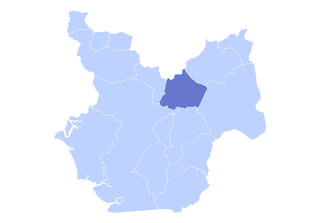
Apacilagua is a small town and municipality in the Honduran department of Choluteca. It is situated 29.3 kilometres (18.2 mi) by road to the northeast of the town of Choluteca, in the northern mid part of the province, not far from the border with the El Paraíso Department. The small town of Apacilagua lies on the Choluteca River along the RN85 road, and contains the Iglesia Catolica Apacilagua, a Catholic church. The municipality covers an area of 213.1 square kilometres (82.3 sq mi), and contains 8 villages and 149 hamlets. As of 2015 it had a population of 9,075 people.
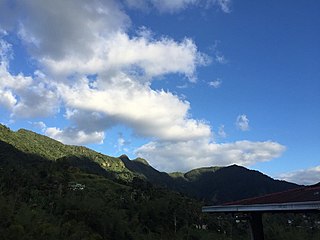
Tres Picachos is one of the highest peaks in Puerto Rico at 968 meters (3,176 ft). It is located on the border between the municipalities of Ciales and Jayuya in the central part of the island, and is part of the Cordillera Central.
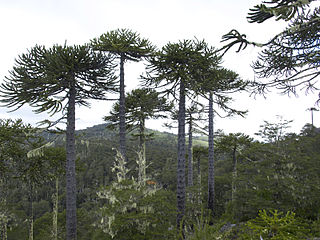
The Nahuelbuta Range or Cordillera de Nahuelbuta is a mountain range in Bio-Bio and Araucania Region, southern Chile. It is located along the Pacific coast and forms part of the larger Chilean Coast Range. The name of the range derives from the Mapudungun words nahuel (jaguar) and futa (big).

Lachuá Lake is a karstic lake in Guatemala. It is located in the middle of a national park covered with tropical rain forest, northwest of Cobán, near the border between the departments of Alta Verapaz and El Quiché. The lake is near circular in shape and is probably a cenote or doline. The lake water has a slightly sulphurous smell, which may explain the origin of its name: "Lachuá" is derived from the Q'eqchi' words "la chu há" which means "the fetid water". The water contains a relatively high degree of calcite and tree branches fallen into the lake are quickly covered with a white calcite layer.

Antonio José Brack Egg was an agronomist engineer, an ecologist, and researcher. He was the first Peruvian Minister of the Environment. He is a national and international authority on issues pertaining to biological diversity and biocommercial development. He died after a brief hospitalization in 2014.

The Bosque el Nixticuil is an old-growth forest located northwest of the Metropolitan Zone of Guadalajara in the Mexican town of Zapopan. An urban forest, it is encroached by the metropolitan area's constant growth. It is mostly composed of oak, holm oak and pine.
Cuevas del Silvino is a limestone cave system in Guatemala. It is located at km 260 on the road connecting Guatemala City to Puerto Barrios, in the municipality of Morales in the department of Izabal.
Claudio Donoso Zegers was a Chilean forester, teacher and professor emeritus at the Austral University of Chile in Valdivia. Donoso was among the first to define the different forest types of Chile when he released the book Tipos forestales de los bosques nativos de Chile in cooperation with CONAF in 1981. This typology became later official by its use in Chilean law. From 1980 to 1981 he was co-editor of Bosque, a forestry scientific journal published by the Austral University of Chile. He retired in 2000 becoming a professor emeritus.
Cerro El Baúl, also known as El Baúl, is a forested lava dome overlooking the valley of Quetzaltenango. It is located about 3 km north of the Almolonga volcano, at the south-eastern edge of the city of Quetzaltenango in Guatemala. And is one of the city's last remaining green areas.
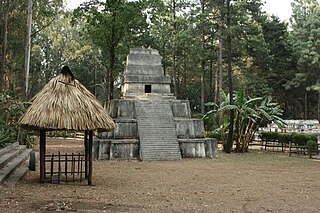
Naciones Unidas National Park is a forested park area of 4.91 km2, located 21 km south of Guatemala City, just north of Lake Amatitlán in the municipality of Villa Nueva. It is one of the last remaining nature reserves in the Guatemala City Metropolitan Area.

The National Council for Protected Areas is the government agency of that has as its mission the conservation and the sustainable use of the biological diversity and protected areas of Guatemala. CONAP was created by Decree 4-89, or the Law of Protected Areas gave jurisdiction to over the System of Protected Areas of Guatemala, which is the conglomeration of all protected areas, and those under special protection in the country.

Volcán Siete Orejas is a stratovolcano in Guatemala located within the Quetzaltenango Department, in the municipalities of Quetzaltenango, Concepción Chiquirichapa, La Esperanza, and San Martin Sacatepequez. It is in the Sierra Madre de Chiapas.
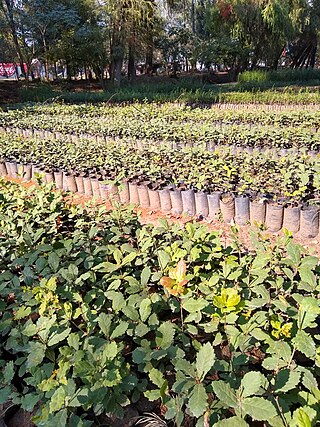
Viveros de Coyoacán is a combination tree nursery and public park which covers 38.9 hectares in the Coyoacán borough of Mexico City. The nursery was founded by Miguel Angel de Quevedo in the early 20th century as a way to provide seedlings for the reforestation of Mexico’s badly damaged forests, especially around Mexico City. The first lands were donated by Quevedo himself with the federal government then getting involved, allowing for the planting of 140,000 trees between 1913 and 1914 alone. Today, the nursery produces one million seedlings per year mostly for projects around Mexico City. The area was declared a national park in 1938 and today attracts between 2,500 and 3,000 visitors daily, many of whom come to exercise or feed the area’s very tame squirrels. The overpopulation of squirrels and a large rat population have been problems for the park.
The Sierra de Lema is an upland mountain range area with tepuis, located in Bolívar state of southeastern Venezuela.
Runa Foundation is a public, non-profit organization with offices in Brooklyn, NY; Quito, Ecuador; Archidona, Ecuador; and Tarapoto, Peru. Runa Foundation's stated mission is to "create new value for tropical forests that benefit local people and the forest ecosystem". Runa Foundation is a 501(c)(3) non-profit corporation registered in the state of Rhode Island.
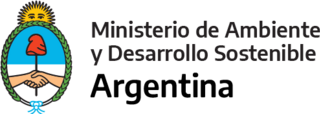
The Ministry of the Environment and Sustainable Development of Argentina is a ministry of the national executive power that oversees the government's policy on environmental issues and promotes sustainable development.
The Argentine Patagoniawildfires begun on Sunday March 7, 2021 when a focus of fire appeared at kilometer 21 of Provincial Route 6 of Río Negro Province, Argentina. Subsequently, the fire spread to Las Golondrinas, Lago Puelo, El Hoyo, El Maitén and Cholila in Chubut Province, following the 42nd parallel south. The fire would spread aided by the wind reaching populated areas where there have been reports of burned vehicles and the destruction of hundreds of houses. Servicio Nacional del Manejo del Fuego helped people evacuate the area. Various causes have been proposed for the fire, including the fall of a trees on electrical transmission cables, given that the fires follow the electrical wiring. Intentional fires have also been proposed as a cause. National minister of Ambiente y Desarrollo Sostenible, Juan Cabandié, called for an investigation through a criminal complaint about the causes of the fire. As of March 12, 2021, 11 people were missing.
Pablo Tovar is a Spanish psychologist - senior executive coach, lecturer and author. Specialised in leadership and organisational transformation, he is the author of several books on the subject and consultant on the documentary film Leap! (2020). He was awarded the Estudios Financieros Prize in 1995 and 1996, among other honours.
References
- 1 2 Melgar, William (2003). "Características socio-económicas y ecológicas de Guatemala". Estado de la diversidad biológica de los árboles y bosques de Guatemala (inédita ed.). Roma: Documentos de Trabajo: Recursos Genéticos Forestales. FGR/53S Servicio de Desarrollo de Recursos Forestales, Dirección de Recursos Forestales, FAO . Retrieved 2009-08-20.
- 1 2 Urquijo Reguera, Julia (2004). "Seguridad Alimentaria y Desarrollo Sostenible en Zonas Marginadas de Guatemala. El Papel de los Bosques en la lucha contra la Pobreza y la Inseguridad Alimentaria". Escuela Técnica de Ingenieros Agrónomos, Universidad Politécnica de Madrid. Retrieved 2009-08-17.
- ↑ CONAP. "Zonas de vida en Guatemala". conap.org.gt. Retrieved 2009-08-17.[ permanent dead link ]